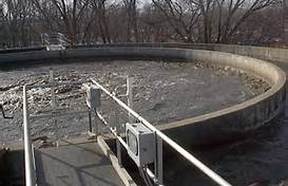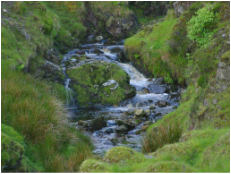 Activated Sludge Unit
Activated Sludge Unit To more fully answer the question, we need to look at wastewater microbiology and the nature of Mixed Liquor Suspended Solids (MLSS). As I like bullet points, here it is:
- The microbial composition depends upon the influent makeup including organics present, waste concentration, inorganics including TDS/chlorides, toxic and quasi toxic compounds.
- Another factor in microbial makeup is the system's environment - pH, macronutrient (N,P) concentrations, temperature, dissolved oxygen, and sludge age.
- MLSS contains a mixture of active bacteria, dead cells, extracellular polymeric substances (EPS), and adsorbed particles. In most systems the active bacteria portion is less than 15% with longer sludge ages having a lower active fraction.
Bioaugmentation includes adding cultures screened for growth in the system. The resulting product is highly concentrated with respect to active microbial fraction. How we use it with adding MLSS from nearby plants is based on evaluation and experience. Here are the situations:
- If a similar wastewater facility is nearby - trucking in sludge can be highly beneficial using MLSS alone.
- Long distance transport can add substantial cost and long storage time can result in septic sludge being added with associated problems.
- If a system is experiencing moderate upset and has sufficient MLSS but low microbial activity, the best option is often adding bioaugmentation product as it can restore the active portion quickly without adding inert solids.
- In cases where the MLSS is depleted (lost) - adding sludge for mass purposes along with active bioaugmentation cultures is the most rapid option to restore full treatment efficiency.



 RSS Feed
RSS Feed